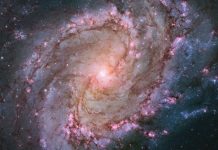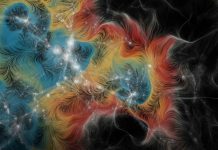
Astrophysicists from the University of Hong Kong have developed a groundbreaking method to track down the universe’s very first stars, offering new clues about how everything began.
This exciting breakthrough, recently detailed in The Astrophysical Journal Letters, has grabbed the attention of the global astronomy community, including a nod from the Space Telescope Science Institute, a major hub for NASA’s space observations.
Imagine the universe shortly after the Big Bang, filled with a mixture of hydrogen and helium. From this cosmic soup, the first stars were born.
These stars, known as Population III (Pop III) stars, were unlike anything we see today.
They were enormous, incredibly hot, and lived fast and died young.
Despite their importance in creating the elements that make up the world around us and seeding future stars and galaxies, these celestial giants have remained elusive, hidden by their great distance and faint light.
However, Professor Jane Lixin Dai and her team at HKU have found a clever way to spot these ancient stars by watching what happens when one gets too close to a massive black hole.
If a Pop III star drifts into a black hole’s neighborhood, it gets torn apart by the black hole’s intense gravitational pull in what’s called a tidal disruption event (TDE). As the black hole devours the star’s remains, it sends out incredibly bright flares of light.
These flares are so bright that they can be seen from billions of light years away, potentially allowing us to catch a glimpse of these first stars.
What sets these flares apart is how they change as they travel through the expanding universe. The flares stretch out over time and shift in color, moving from visible light to infrared by the time they reach us.
This discovery is timely because NASA recently launched the James Webb Space Telescope (JWST) and plans to launch the Nancy Grace Roman Space Telescope (Roman). Both are equipped to detect infrared light, making them perfect for spotting these distant, stretched-out flares from the early universe.
Professor Priya Natarajan from Yale University, who collaborated on the study, highlighted the Roman telescope’s ability to scan vast areas of the sky and peer deeply into the universe’s early days.
This capability makes it particularly suited to spot these Pop III TDE flares, offering a new way to indirectly observe these ancient stars.
Janet Chang, a Ph.D. student involved in the research, is optimistic about the prospects. She anticipates that the Roman telescope could detect dozens of these unique events annually, provided it uses the right observational strategies.
This innovative method opens up a whole new pathway to understanding the universe’s first stars, shedding light on the cosmic origins and the evolution of galaxies like our own.
The next decade could reveal some of the universe’s oldest secrets, thanks to these new tools and the detective work of astronomers.



